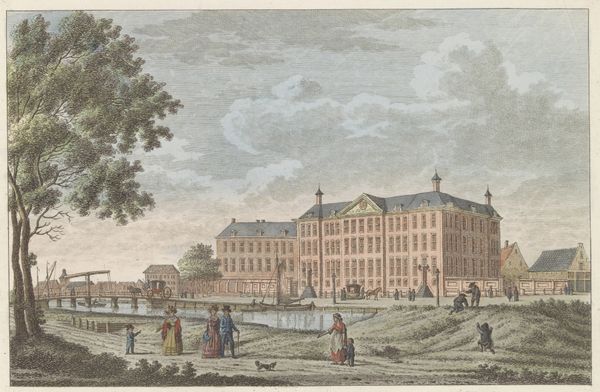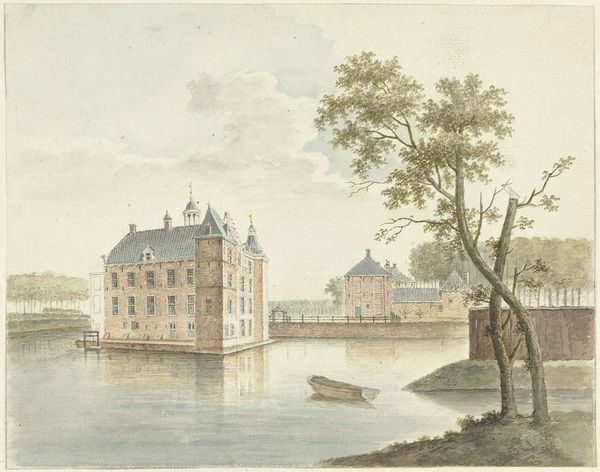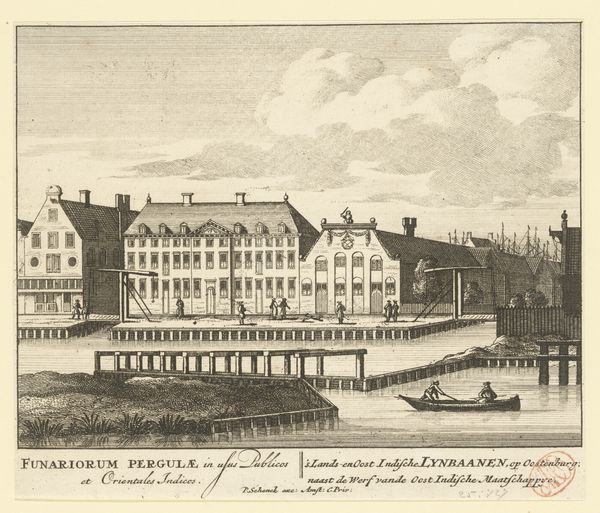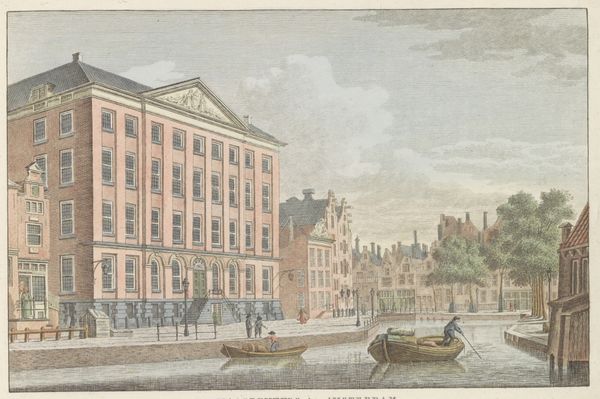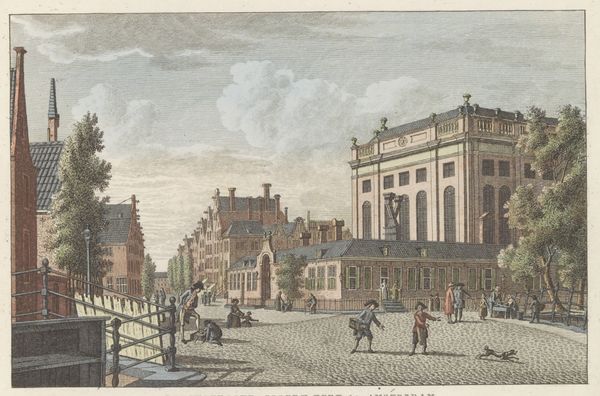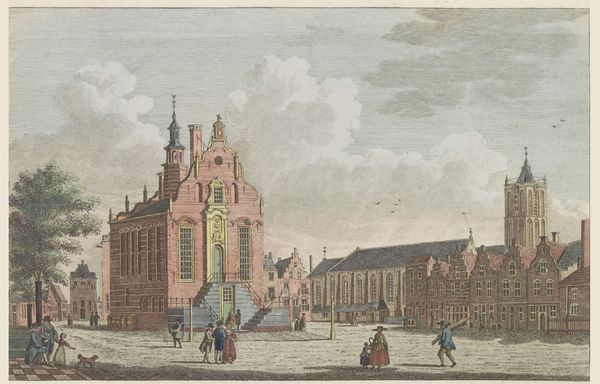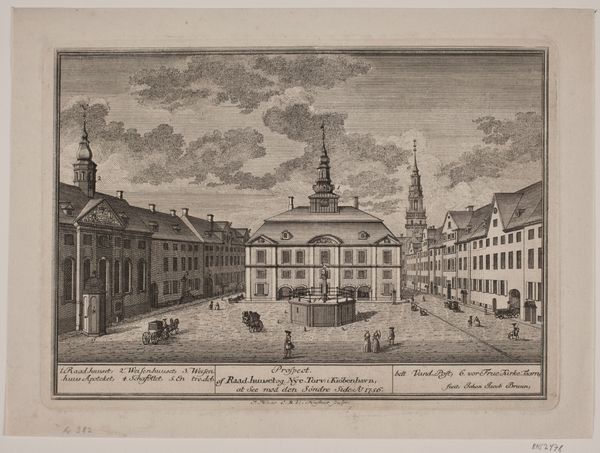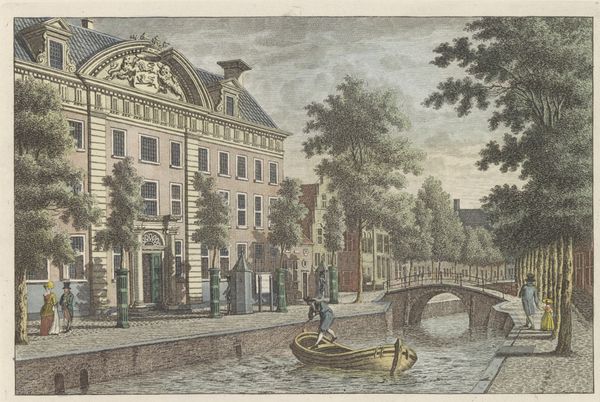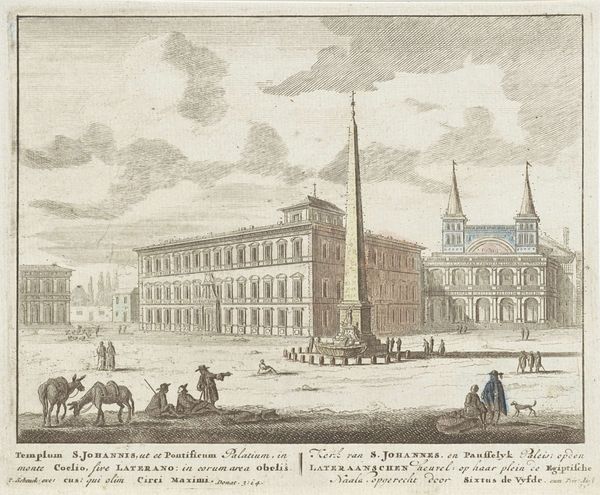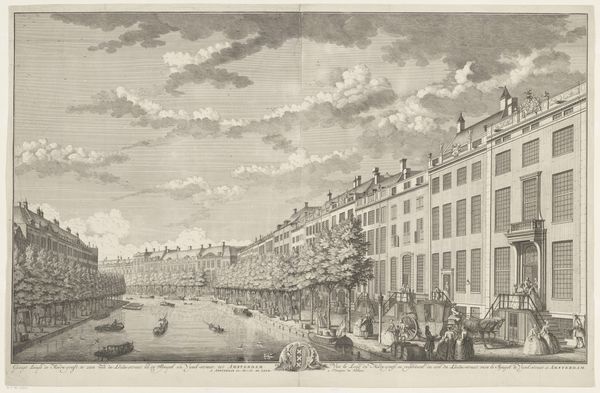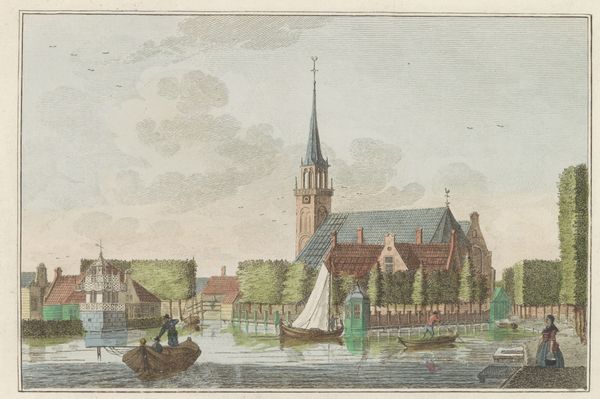
Hoogduitse Synagoge te Amsterdam, ca. 1790 Possibly 1786 - 1825
0:00
0:00
carelfrederikibendorp
Rijksmuseum
print, engraving
#
neoclacissism
#
dutch-golden-age
# print
#
coloured pencil
#
cityscape
#
watercolour illustration
#
engraving
Dimensions: height 174 mm, width 250 mm
Copyright: Rijks Museum: Open Domain
Curator: This engraving by Carel Frederik (I) Bendorp, titled "Hoogduitse Synagoge te Amsterdam, ca. 1790," captures a cityscape scene in the Netherlands during the late 18th century. What strikes you about it? Editor: There's a captivating calmness about this work. The muted colors, soft lines... it feels incredibly still and quiet despite depicting what must have been a bustling urban scene. Look at how present the Synagogue is on the landscape. I am wondering about the printing and the labor required to make something this exact. Curator: Indeed. The stillness might stem from the historical context. This piece emerges during the rise of Neoclassicism, influencing architecture and visual representation across Europe. The artist is deliberately presenting a moment of civic order and idealized space through the chosen style, even perhaps in this religious setting. The placement and focus is on the building and those who support the temple’s function. Editor: Absolutely. But look closely. It is not as calm as I thought on first look. Note the slight irregularities in the line work, the slight variations in the coloring. These deviations remind us that this wasn't a purely mechanical process. Human labor, skill, and potentially the imperfections of the printing process, are embedded in its production. It speaks to how this artwork became more broadly accessible through the materials of production, engraving as a relatively reproducible and efficient method in comparison to painting. Curator: You’re right. It does show the mediation that results from producing and circulating images to create and control ideas. Consider the role that public images of religious buildings served in solidifying their position within the urban fabric. Beyond mere architectural documentation, this work participated in constructing and affirming social values. Editor: The materiality informs how this cityscape speaks, too. It uses printing, ink, and paper to document, disseminate, and also shape perceptions. It’s about both what the image shows, and how its made that adds social power. I'm left considering the hands that physically crafted these plates, and all the unseen hours, to translate this monumental building to the masses. Curator: That's well observed. "Hoogduitse Synagoge te Amsterdam, ca. 1790," presents us with a seemingly straightforward cityscape, yet the print's historical and material context makes clear the importance of considering art’s role as a civic messenger in a transformative historical period. Editor: Ultimately, pondering this piece is a reminder to look at both the grand facade, and the granular details of its construction, whether its the buildings or the prints. Both perspectives shape our understanding.
Comments
No comments
Be the first to comment and join the conversation on the ultimate creative platform.
